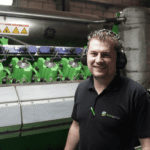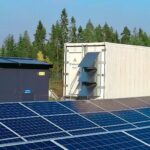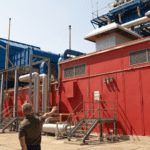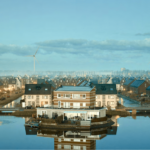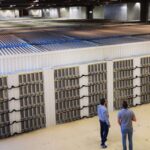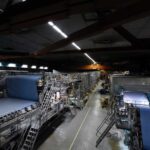Boliden Aitik, located in northern Sweden, is the country’s largest open-pit copper mine. Around 45 million tonnes of ore are mined and enriched annually to form metal concentrates containing copper, gold, and silver. Boliden has introduced a Low-Carbon Copper product that generates only 1.5kg of CO2 per kilogramme of metal, outperforming the global average by more than half and demonstrating a significant advance in efficient metal production.
Boliden has participated in demand response since May 2023, using their primary mill to balance the grid and restore frequency. By providing 8 MW to the frequency holding reserve FCR-D Up, Boliden has earned several hundred thousand euros in gross revenue in the first eight months of participation, during which they have been activated five times.
Working with Vattenfall to identify the right energy assets
Our partner Vattenfall approached Boliden to inform them of demand response and inquire which energy assets could be utilised for flexibility services. We worked closely together to identify flexibility opportunities within their processes. This meant finding which of their existing equipment could alter their consumption quickly enough to meet the FCR-D Up requirements without drastically impacting their processes.
Boliden Aitik uses two energy-intensive lines with primary and secondary mills to grind the crushed ore. The two powerful primary mills were selected to connect to balancing markets for frequency regulation.
“During this investigation, we found that the primary mills were the most suitable assets, as they drew around 45 megawatts together and could have their power reduced quickly when required”
explains Johannes Sikström, Head of Process Control at Boliden’s Technology Department.
Testing out the optimal demand response set-up
Since Boliden’s processes are sensitive to disturbances and the primary mills used for demand response are crucial to the smooth operation of the production, we worked closely with their team to conduct a series of tests and identify the ideal set-up. This process reassured Boliden regarding the cost-benefit of demand response by demonstrating the extent to which the financial benefits outweighed the production loss during occasional disturbances.
The first test identified how much production Boliden could afford to lose during the activation. The extra revenue earned from being available and activated far surpassed the production loss. The second test examined whether such a rapid change in production would cause disturbance downstream in their process and which adjustments would be required.
Through this process, Boliden decided to start by connecting 8MW to the FCR-D Up programme and would revisit this number later.
“It is crucial for us to find the ideal solution that works for our customers. It’s a delicate but rewarding process to identify the optimal amount of megawatts we can use to balance the grid and that will bring our customer an optimised revenue with the least amount of disruption possible”
comments Jacob Voghera, Sympower’s Technical Sales Engineer
The day-to-day of participating in demand-side flexibility

Boliden’s assets are used to balance the grid on the frequency holding reserve FCR-D up. The Frequency Containment Reserves for Disturbances (FCR-D), also known as primary control reserves, are the Nordics’ balancing services and the first to be activated to fix disturbances in the grid’s frequency. The “up” stands for upregulation, meaning that the customers participating in demand-side flexibility will have to reduce their electricity consumption for a few minutes to support grid frequency regulation until it is back in balance at 50 Hz.
Because the FCR-D programme acts as a first defensive layer to prevent blackouts, the energy assets connected to it must be able to be reduced significantly within five seconds.
“The whole process is very straightforward. Ahead of time, we agree with Sympower on a timeframe during which our assets could be activated. When it happens, the process operator will see on their interface that FCR is being activated, and the mills slow down. It’s clearly marked why the mills are slowing down, so no one thinks something is wrong and tries to correct it”
explains Johannes Sikström
Between May and December 2023, Boliden’s mills have been activated five times, resulting in several hundred thousand euros in gross revenue earnings. Boliden receives compensation for every hour they are available and able to deliver, regardless of whether the assets are activated. The actual amount varies, and the money received from the Swedish TSO Svenska kraftnät is being shared between Vattenfall, Boliden and Sympower.
Looking into the future: considering adding resources and programmes
Boliden’s participation in demand response has sparked internal discussions on their broader energy strategy and which other assets could be activated. Boliden is considering adding their electric heating boilers to the FCR-D Downregulation market programme. This time, the assets would have to increase their consumption temporarily to help manage electricity in the network when the grid frequency is too high.
“We all need a stable grid to be able to operate. It feels good to play a part in helping to stabilise the grid and support its normal operation. We want to do more, that’s why we’re now looking into the flexibility potential of the new equipment we’re acquiring.” – Johannes Sikström
Watch demand response flexibility in practice at the Aitik mine in this short film from Boliden: Frequency regulation in Boliden Aitik.
Download a handy PDF summary below

